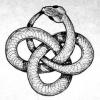Hello, World!
I would like 2014 to be 'my year of transformation' and I think You could help me out, helping me decide what I should do and what I should skip.
I would like to be, in order of importance, less prone to disease and increase chance of living a long life, become less tired, become slimmer, stronger and faster.
If I during the process could regain some hairs at the top of my head and get slightly whiter teeth, that would be a bonus.
Preconditions: 35 years old male living in Sweden. Wife and four children (0 - 7 years old). Working daytime in a office. 170 cm and 68 kg (5 ft 7 inches and 150 lbs). Normal shape, working out infrequently. No diseases or allergies. Omnivore; I'm eating to much lousy fat, crisps etc but not alot of sugar. Drinking alcohol swedish-style i.e. nothing sunday through thursday, a little during the weekends (3-4 small cans of beer) and way to much two to three times a year.
A normal day: Rise and shine 05:30. One cup of coffee. One small sandwich (butter and cheese) while walking (6 minutes) to the bus. Coffee time at 09:15, one cup of coffee and one small sandwich (butter, some vegetables and cheese). Lunchtime at 11:30 (leftovers from yesterday's dinner most of the days). 14:00, another coffee break. 16:00, end of work. At 17:00 dinner. Nothing fancy, something the kids accept. Some kind of vegetable is included. This and that all evening. 22:00, crash into bed, minor headache.
Alot of things could be improved as you see but, what should I focus on and exactly how should I do it? I'm a fairly intelligent man (after all, you can understand most of this text even though english is only my third language) and I have time to do preparations and what not. What should I do and how should I do it.
Make a detailed list and I'll be your guinea pig all next year!
=)

















































